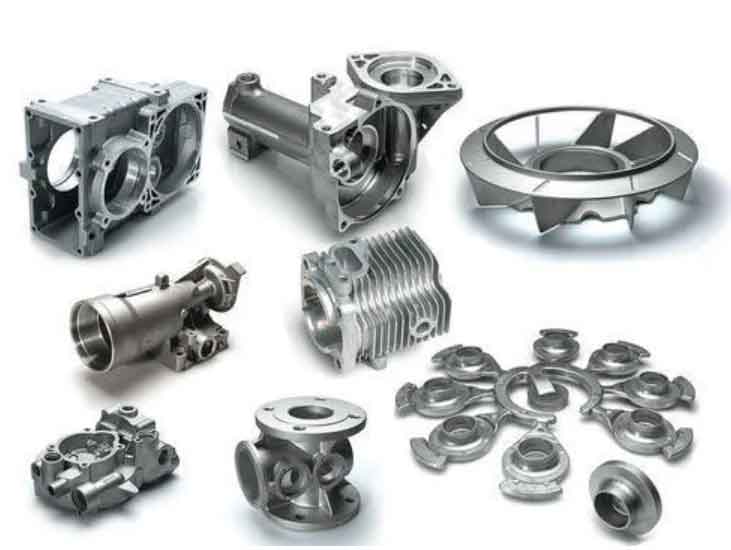Hot cracks are among the most critical defects in engine castings. Undetected cracks propagate under operational stresses, leading to fluid leakage or catastrophic engine failure. This study investigates the formation mechanisms of hot cracks in V-type grey cast iron engine blocks (HT280 material, 12-cylinder, 1,172 kg) and proposes a cost-effective solution validated through production trials.

1. Defect Characterization and Statistical Analysis
Hot cracks predominantly occurred at inter-cylinder connections (oil pan joint surface) with the following characteristics:
| Crack Type | Surface Morphology | Formation Temperature | Oxidation Color |
|---|---|---|---|
| Hot Crack | Wide, torn appearance | Liquid-solid phase transition | Severe oxidation (non-metallic) |
| Cold Crack | Narrow, matching surfaces | Below solidus temperature | Mild oxidation (metallic luster) |
Statistical analysis of 35 defective castings revealed spatial and temporal patterns:
$$ P_{right} : P_{left} = 2.4:1 $$
$$ \text{Crack frequency at Position 3} = 41.7\% $$
| Position | 1 | 2 | 3 | 4 |
|---|---|---|---|---|
| Crack Count | 5 | 5 | 15 | 11 |
2. Thermal Stress Analysis
The bottom-gating system creates differential solidification conditions:
$$ \Delta T = T_{bottom} – T_{top} \approx 120^\circ C $$
$$ \sigma_{thermal} = E \cdot \alpha \cdot \Delta T $$
Where:
\( E = 120 \, GPa \) (Young’s modulus for grey cast iron)
\( \alpha = 12 \times 10^{-6} \, ^\circ C^{-1} \) (thermal expansion coefficient)
Stress transmission through sand cores creates tensile stresses at critical sections:
$$ \tau_{core} = \frac{F}{A} < \sigma_{yield} $$
Core resistance (\( \tau_{core} \)) becomes insufficient to counteract thermal stresses during late-stage solidification.
3. Critical Section Analysis
Comparative measurements of cracked vs. intact sections:
| Parameter | Cracked Sections | Intact Sections |
|---|---|---|
| Average Thickness (mm) | 46.05 ± 0.3 | 44.44 ± 0.2 |
| Solidification Time (min) | 25.3 | 22.1 |
The thickness differential (\( \Delta t \)) correlates with stress concentration:
$$ \Delta t = 1.61 \, mm \Rightarrow \sigma_{local} \propto \ln(\Delta t) $$
4. Chilling Process Optimization
Implementation of chill plates (30 mm × 150 mm × 80 mm, Q235 steel) at critical right-side sections:
$$ Q_{extracted} = m_{chill} \cdot c_p \cdot (T_{cast} – T_{ambient}) $$
Where:
\( m_{chill} = 2.8 \, kg \)
\( c_p = 470 \, J/kg^\circ C \)
\( T_{cast} = 1,380^\circ C \)
| Parameter | Pre-Chill | Post-Chill |
|---|---|---|
| Crack Incidence | 50% | 0% (treated sections) |
| Solidification Rate | 1.2 mm/min | 2.7 mm/min |
5. Metallurgical Factors in Grey Cast Iron
Key composition parameters for crack resistance:
$$ CE = C\% + 0.3(Si\% + P\%) = 4.1 \pm 0.1 $$
$$ S\% < 0.12\%, \quad P\% < 0.07\% $$
Graphite morphology analysis:
$$ \lambda_{graphite} = \frac{N_{nodules}}{A_{area}} \approx 120 \, mm^{-2} $$
Type A flake graphite (ASTM A247) provides optimal stress dissipation in grey cast iron components.
6. Production Validation
Four production batches (35 castings) confirmed:
$$ \eta_{improvement} = \frac{N_{defect-free}}{N_{total}} \times 100\% = 91.4\% $$
Remaining defects occurred exclusively in non-chilled sections, verifying the effectiveness of localized chilling.
7. Process Implementation
Finalized production parameters:
| Parameter | Value |
|---|---|
| Chill Plate Temperature | 200-250°C |
| Pouring Temperature | 1,360 ± 10°C |
| Mold Compression Strength | 1.8-2.2 MPa |
This systematic approach combining thermal analysis, targeted chilling, and grey cast iron metallurgy control effectively eliminated hot cracks while maintaining production efficiency. The methodology demonstrates broad applicability for complex cast iron components with varying section thicknesses.
